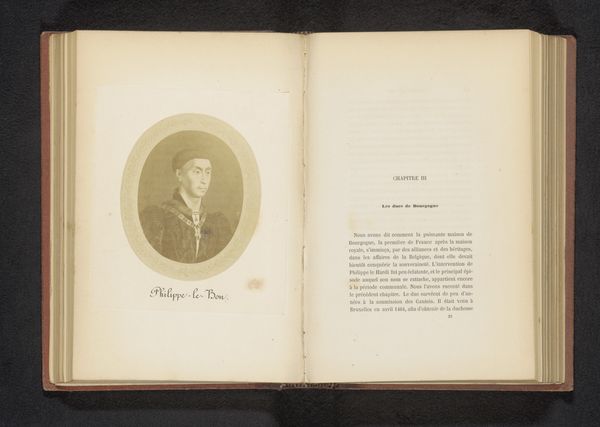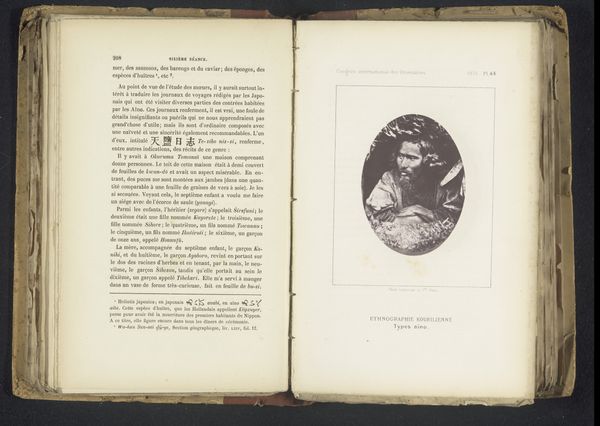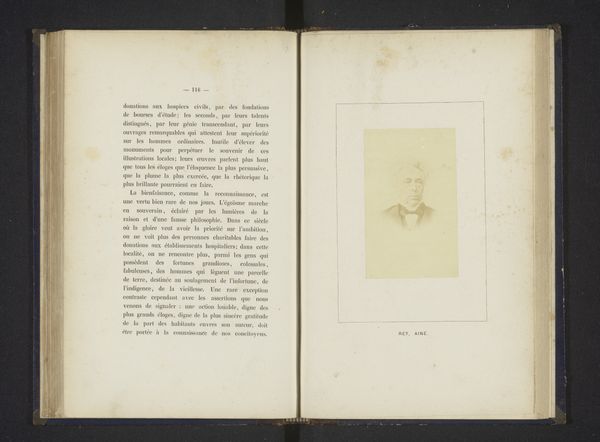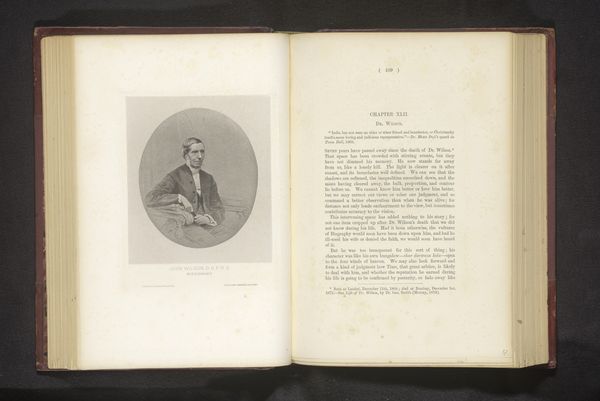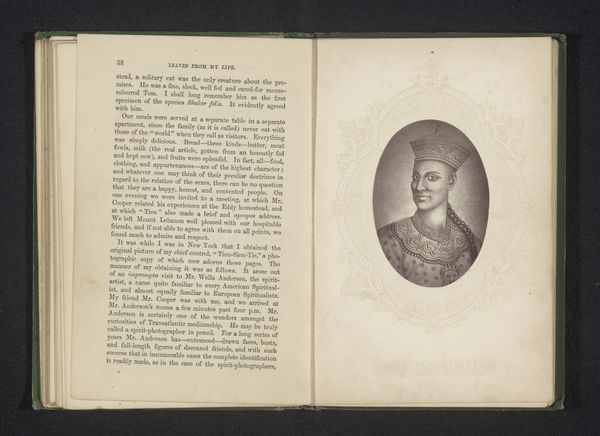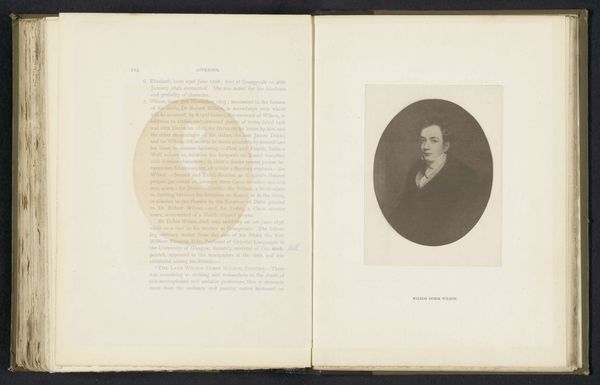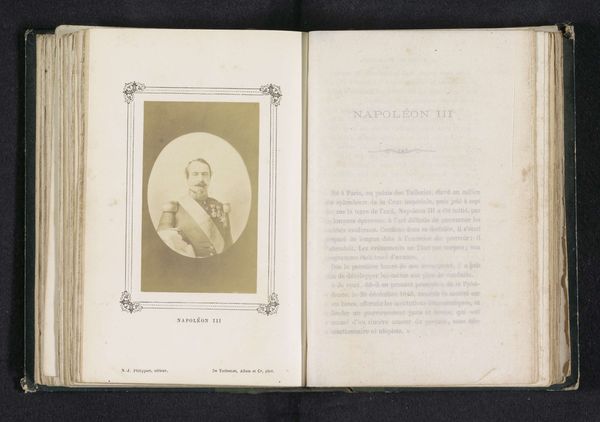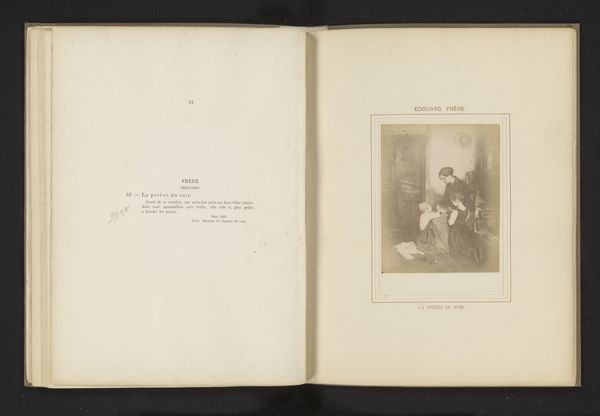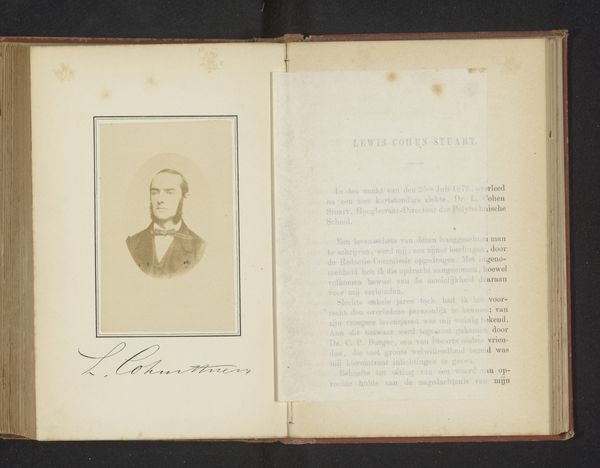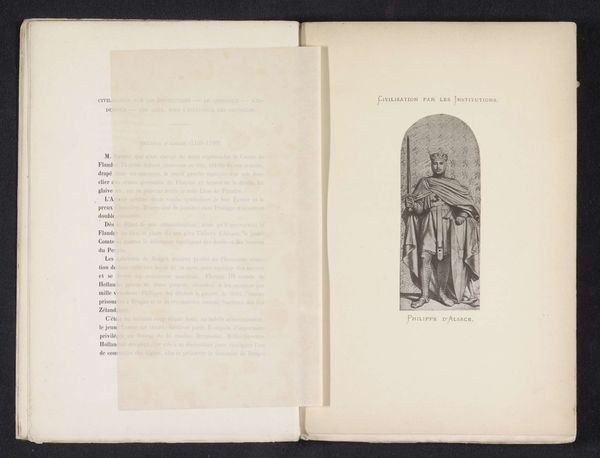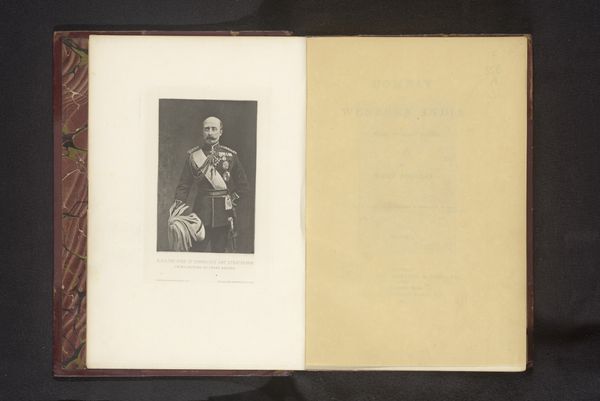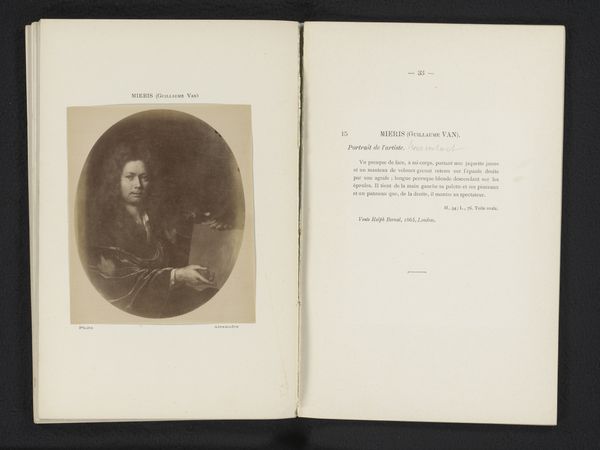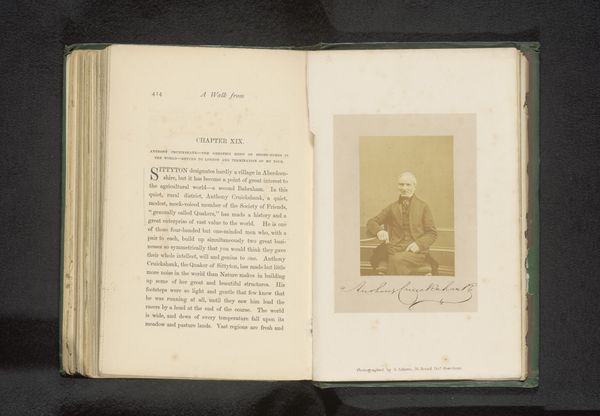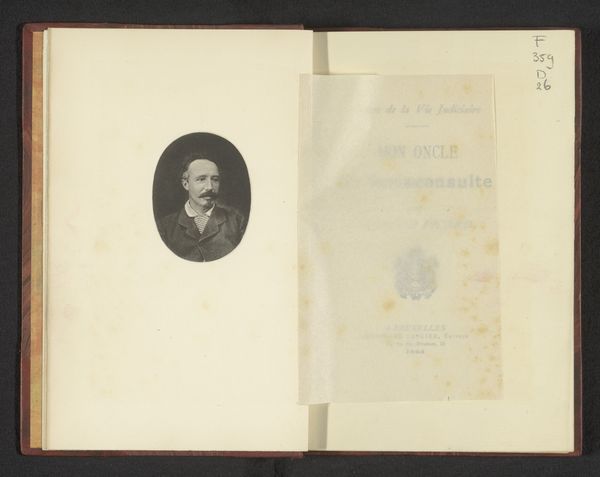
photography
#
photography
Dimensions: height 90 mm, width 64 mm
Copyright: Rijks Museum: Open Domain
Editor: This is a page from a book with a photographic portrait of Pierre Berton, dating from around 1872 to 1882. It's a sepia-toned photograph, really formally presented with an elaborate frame around the image. It feels quite old-fashioned and staged. What strikes you about this portrait? Curator: Well, isn't it interesting how much theatre is embedded, not only in the subject matter of Berton himself, but in the very presentation? The theatrical flourishes in the ornate framing—those playful cherubs above the image feel very stagey, like the overture before the curtain rises. Don't you think it hints at the constructed persona of a performer, someone very aware of their public image? It makes you wonder about the relationship between identity and performance in that era, doesn’t it? Editor: Absolutely! The carefully posed look, the stiff collar, all feel very deliberate, creating a persona. Was this common in photographic portraiture at the time? Curator: Exactly. Photographic portraits from that era were very much about crafting an image, a legacy. This photograph presents Berton in a very specific light, one that emphasizes his professionalism, perhaps his intellect. There’s a kind of stillness to the image, but beneath it, I wonder about the vibrant, fleeting energy of his performances on stage. This makes me think of the contrast of photography freezing an actor forever into a two-dimensional object, removed from the flux of acting onstage. Editor: So it's almost a paradox – capturing a performer, whose art is so ephemeral, in such a static and permanent medium? Curator: Precisely. The photo gives prominence to an established bourgeois aesthetic while freezing someone involved with more spontaneous work into place. This book page operates almost like a relic in memorial of Pierre Berton as if theater weren’t impermanent by definition. What does that memorialization accomplish? And at what cost? These are interesting questions that I think come up for any art. Editor: It's fascinating to think about how photography was used to solidify identity and performance, offering this almost paradoxical tension of the image and lived experience! Thanks, this has helped me see this piece in a totally different way.
Comments
No comments
Be the first to comment and join the conversation on the ultimate creative platform.
